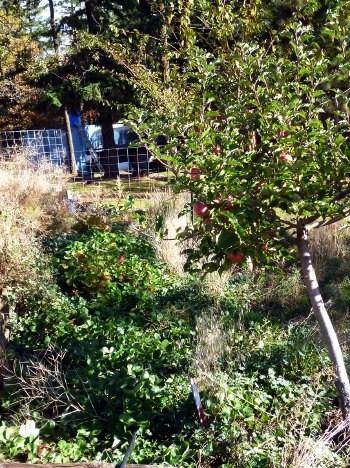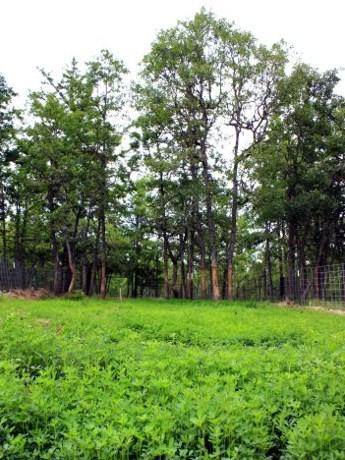Hello one and all, I will try to replay to each of you individually, since you all gave me so much good fodder for conversation.
Garrett:
We have native birds-foot trefoil (Lotus nevadensis) which I have endeavoured to find and save seed from. It is very hardy plant! grows out in what I call "no mans land" kind of conditions. However, broadcast seeding been very unsuccessful... any success with that?
From what I observe, it only grows on our property in open field conditions. It may be that it prefers a certain kind of soil biology? So I anticipate it's use be naturally restricted to more open Savannah areas.
Subterranean clover seems like a good crop for dry exposed soil conditions as well. Perhaps it would be useful in the annual garden for a path mulch. I will try and track down some seed.
Leila:
Thank you for the referral to Dutch White clover. That is one of the primary white clovers I have been able to find with any reference to drought tolerance along with growing in the understory. It is on my short list of things to move forwa with.
Paul:
It is my expressed intentions to develop a polycultural ground cover. What I am wanting to experiment with is the use of clover as a low-growing ground cover to snuff out the sorts of plants I want less of, without directly shading the plants I do want. Currently I primarily use Dryland Ladak alfalfa as the herbaceous layer legume. Because it is so hardy and it is easy to find seed seed. But it does not provide much help decreasing plants population I do not want.
This is Ladak in its first year growing in late spring. This patch was established first as a monocrop with the intention of mob-grazing it in spring while broadcast seeding to allow the animals (sheep) to punch the seed into the moist soil.
In a lot of areas I seasonally let pigs forage in the understory. this somewhat helps destroy weeds, but it also created enough soil disturbance to ensure the weeds continue to germinate. What I want is more "weeds" that the animals like to eat, so the grazing pressure is more even. Plants like tumble mustard (Sisymbrium altissimum), and Yellow Dock (Rumex crispus) are common but very unpalatable to animals. And of only marginal use to me.

This is a young row of apple/pear. Strawberries are growing in the center of the image against the terrace wall (which you can't really see because the strawberries are so big!) Alfalfa based polyculture is on either side of the picture. You can't see anything else because of the tumble mustard (the brown stuff) is so thick despite having been continuously pulled out and cut back throughout the spring. Hence why I am looking for some kind of weed suppression. The mustard very competitive, not very productive in terms of leafyness, it sucks up nitrogen, and hardly anything likes to eat it, particularly when dry.
What I would like to try in an area is establish a good mat of clover, and then punch wholes in the clover and plant a mix of annuals and perennials like:
comfrey,
borage,
siberian kale,
brocolli/cabbage,
walking onions,
garlic,
collards,
rosemary,
sage,
tulips,
german chamomile,
Strawberry
and native/naturalized species like
white Yarrow,
St Johns Wort
black Raspberry
These are already plants that do well in certain areas. It is just a pain in the butt to have to weed so much in the spring and summer in order to allow the annuals to thrive.
Thanks for sharing your insights, it has given me some things to go ahead with.

 2
2




 2
2





 2
2




 2
2




























 2
2




 5
5





 4
4













